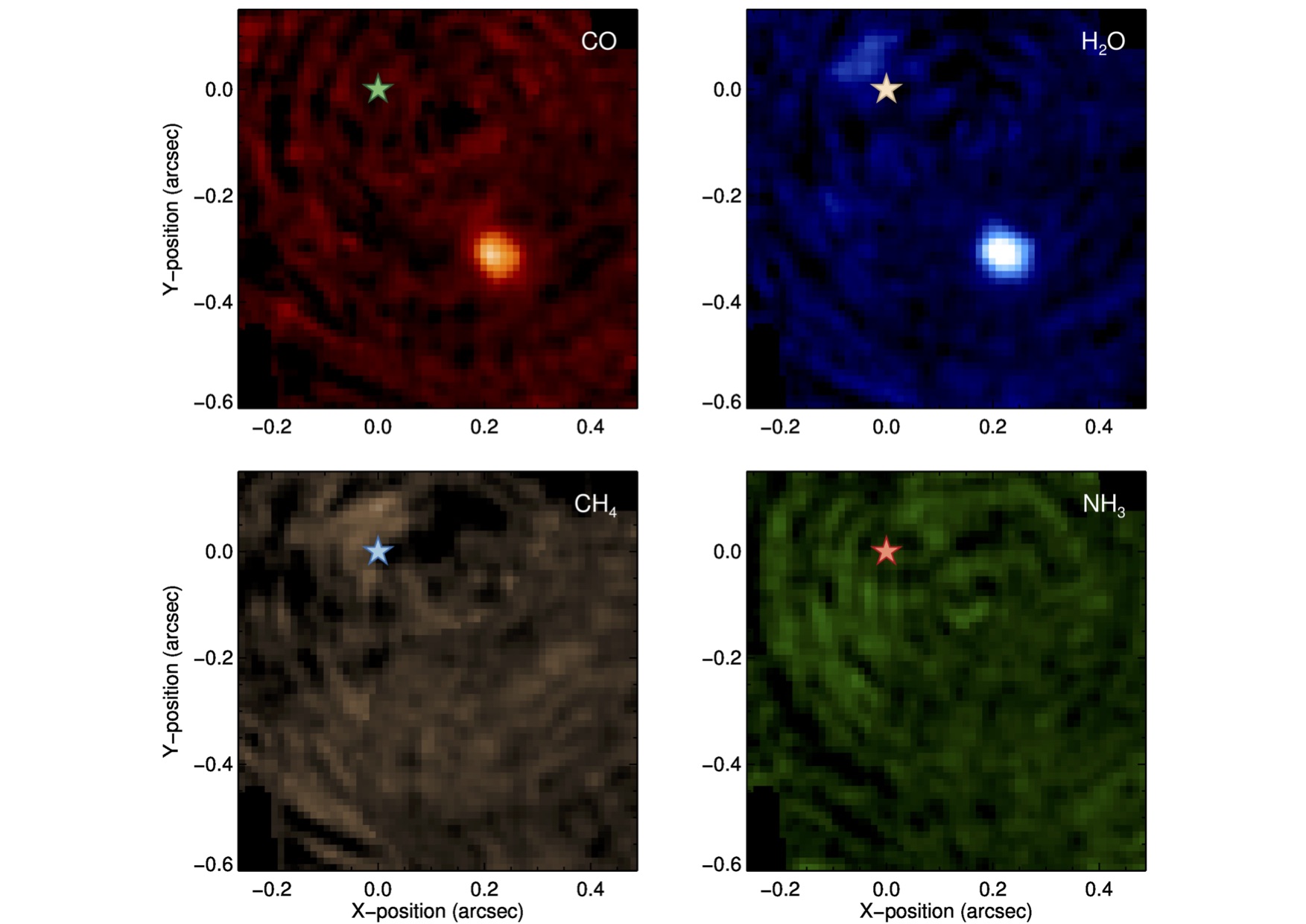Hunting molecules to find planets

Each exoplanet revolves around a star, like the Earth around the Sun. This is why it is generally impossible to obtain images of an exoplanet, so dazzling is the light of its star. However, a team of astronomers, led by a researcher from the University of Geneva (UNIGE), had the idea of detecting certain molecules that are present in the planet’s atmosphere in order to make it visible, provided that these same molecules are absent from its star. Thanks to this innovative technique, the device is only sensitive to the selected molecules, making the star invisible and allowing the astronomers to observe the planet directly.
Jens Hoeijmakers from UNIGE (ERC FOUR ACES and PlanetS team member), wondered if it would be possible to trace the molecular composition of the planets. “By focusing on molecules present only on the studied exoplanet that are absent from its host star, our technique would effectively”erase” the star,leaving only the exoplanet,” he explains.To test this new technique, Jens Hoeijmakers and an international team of astronomers used archival images taken by the SINFONI instrument of the star beta pictoris, which is known to be orbited by a giant planet, beta pictoris b. Each pixel in these images contains the spectrum of light received by that pixel. The astronomers then compared the spectrum contained in the pixel with a spectrum corresponding to a given molecule, for example water vapour, to see if there is a correlation. If there is a correlation, it means that the molecule is present in the atmosphere of the planet.
Molecules, new planetary thermometer
The host star beta pictoris remains invisible in all four situations. Indeed, this star is extremely hot and at this high temperature, these four molecules are destroyed. “This is why this technique allows us not only to detect elements on the surface of the planet, but also to sense the temperature which reigns there” explains the astronomer of the UniGe. The fact that astronomers cannot find beta pictoris b using the spectra of methane and ammonia is therefore consistent with a temperature estimated at 1700 degrees for this planet, which is too high for these molecules to exist.

The planet becomes visible when looking for H2O or CO molecules. However, as there is no CH4 nor NH3 in its atmosphere, it remains invisble when looking for these molecules, just as its host star which contains none of those four elements.
“This technique is only in its infancy,” enthuses Jens Hoeijmakers. “It should change the way planets and their atmospheres are characterized. We are very excited to see what it will give on future spectrographs like ERIS on the Very Large Telescope in Chile or HARMONI on the Extremely Large Telescope which will be inaugurated in 2025, also in Chile,” he concludes.
Paper published in Astronomy & Astrophysics
DOI: 10.1051/0004-6361/201832902
Categories: News
